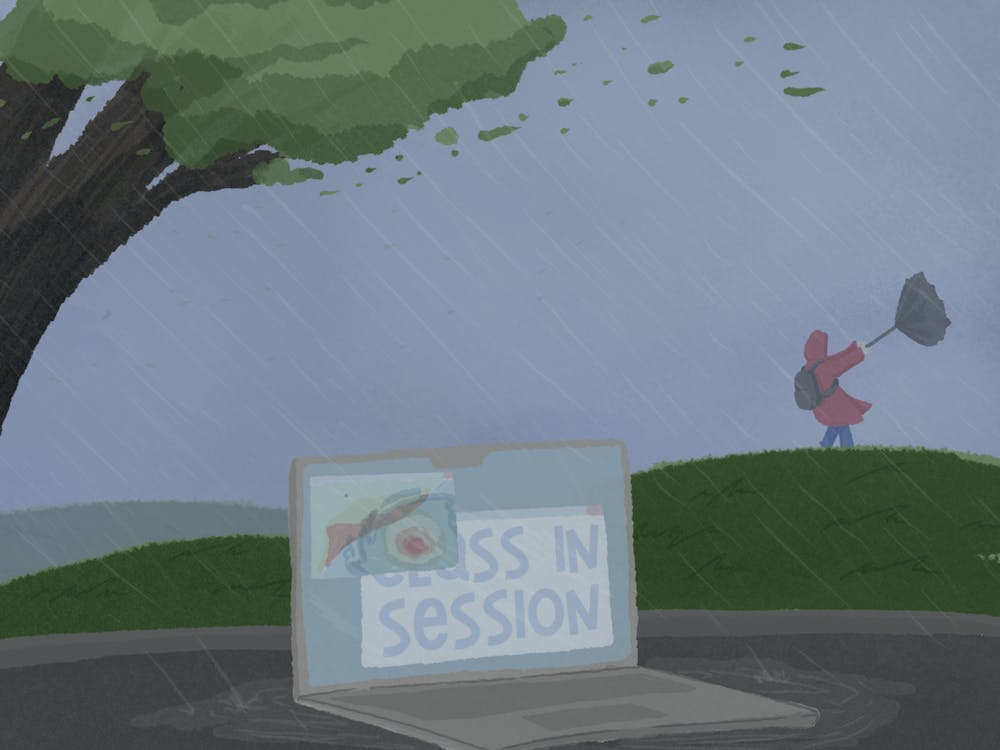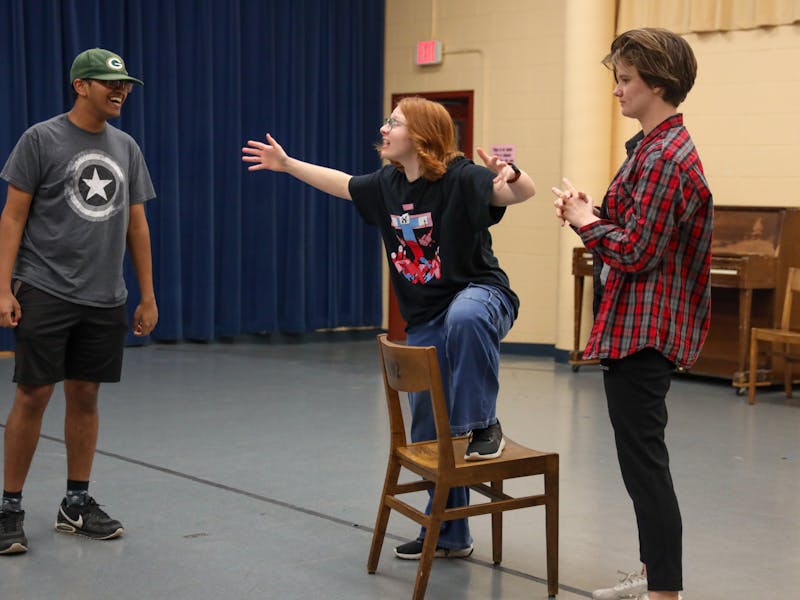In late September 2024, USC students scattered from dorms to dining halls were all awaiting one message on their phones: the board’s decision on what the campus would do to prepare for the upcoming hurricane. Native Southeasterners or seasoned USC students are no stranger to hurricane season, moreover how the unpredictability of such could make or break their school experience during the fall semester. Both have experienced the sensation of knowing a hurricane is approaching but not what to expect from it.
One of the principal issues in ensuring preparedness for an incoming storm, as either an individual resident or a large institution, is determining the risk it poses. While the goal of being prepared for storms is to ensure safety and convenience, it may be costly—in both time and money—to make significant arrangements, such as a university canceling classes, the state government issuing an evacuation or even simply securing extra fortifications to safeguard our homes.
The risk of damage changes in different locations relative to the hurricane’s origin, as the “lead time,” the time between an issued warning and the storm’s arrival, differs by region—the longer lead time there is, the more time people, businesses and institutions have to prepare for its landfall.
How much time did USC students have to make arrangements for the hurricane? While many of us became aware of the approaching storm earlier in the week, we were notified of high winds, rain and flooding closer to its arrival. Many students expressed frustration with having to attend class on Thursday while the hurricane’s effects began hitting the campus and were confused by the USC administration’s lack of cancellation until Thursday afternoon, when most students who had class were already on campus.
By noon on Thursday, streets across campus were heavily flooded, and students took to YikYak, a popular anonymous app, to express their frustrations. During the following weekend, dire consequences such as power and wifi outages occurred. Furthermore, many students with family in the upstate area saw worse circumstances in their homes, which posed even more difficulties.
One student at the university shared her own experience from the hurricane, both on campus and at her family’s home in Greenville. Jane Poinsette, a junior at USC, largely validated what many students had experienced: first being an uncertainty of how to navigate the flash flooding that ensued on Thursday.
“I can’t see the lines of the road because it was so flooded,” Poinsette said of the experience of driving up the Blossom Street hill to class. “The construction from up on a different street was washing dirt on the road—this is dangerous.”
Poinsette confirmed the dangers of low visibility during the flash floods—particularly for students who commute to campus—driving during flooding is risky, yet during this time students were left no choice but to go to class.
Many students also saw damage to their homes off-campus. After class on Thursday, Poinsette left campus to check on her home and discovered more damage than she expected.
"There were huge oak trees all over the roads taking out power lines,” she said. Without a generator, her family had to find a solution to take care of themselves and her grandmother, whose bedroom was destroyed by a fallen tree and who was left without a caretaker. This added another issue for her family to solve, and she subsequently spent the weekend in Greenville searching for solutions to take care of her community.
Similar to many other USC students occupied by the need to help out their families during this period, Poinsette was unable to complete her schoolwork over the weekend.
When asked about any resources the school may have provided, Poinsette stated that she was driven to email the school board to say that she was engaged with greater concerns.
“I still couldn’t get in touch with my grandma or my parents or my aunt. They didn’t have any service,” she said. “I was more concerned about them than I was about schoolwork.”
The administration later sent out an email making classes on Monday and Tuesday optional, but for many students, this had little effect. “You’re still missing material that you’re expected to know for the future,” she added.
Poinsette’s situation and sentiments about the school’s handling of storm readiness largely reflected that of the student body in general: that the weekend was not only taxing and stressful to students, but dangerous for many, and the school could have been more sympathetic to student concerns.
Now that hurricane season has come and gone, it might have been easy to forget the damage Helene left on the USC community. However, as the second semester began another kind of storm occurred. In January 2025, the Southeast—particularly the North Gulf Coast—was hit with a powerful snowstorm. Some regions of the Texas-Louisiana border saw unprecedented blizzard warnings, and cities like Charleston and Wilmington, SC were especially targeted by the arctic air.
Columbia was not spared either, having issued a winter storm warning and faced with freezing temperatures. Students awaited any directives from the school board, unsure of where they stood for the week ahead.
At 4:41 p.m. on Monday, Jan. 20, administration pushed the weather update: “Campus closed after noon on Tuesday.” Yet just four hours later, following Gov. Henry McMaster’s decision, students received word that the cancellation was rescinded and classes were to remain open. YikYak was soon full of complaints and confusion as, during that period, many had made plans for how they were going to take care of themselves for the next day, which were suddenly and unexpectedly derailed.
The next day, two lecture periods in, classes were ultimately cancelled again after 2:30 p.m. By then, roads had started to become icy. History repeats itself—four months later, the USC student community was once again left confused but relieved.
While the Columbia area was not hit by the brunt of the snowstorm, it faced some danger, and just like the flooding four months prior the ice made the streets dangerous for both walking and driving. With a student population as large as USC’s, it is crucial to maintain clarity with safety precautions.
As demonstrated by the circumstances of Hurricane Helene and the recent snowstorm, there is not always a perfect solution and it can be hard to gauge danger storms may pose, but the general student consensus gathered from YikYak and public opinion is that it is better to be safe than sorry. As for campus information resources, the best ways to stay updated on USC weather changes are sc.edu/weather and Carolina Alert.



